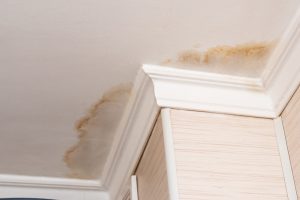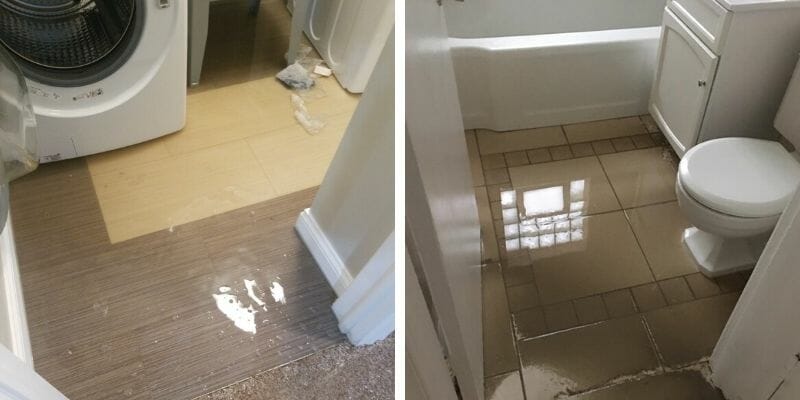Factors Leading to Bathroom Water Harm
Factors Leading to Bathroom Water Harm
Blog Article
The writer is making a few good pointers on the subject of How to Repair and Prevent Bathroom Water Damage? overall in this great article directly below.

Water damage typically occurs in the restroom as a result of the water used everyday. In some cases, the damages could be a little mold from the shower. Other times, it's enormous damages on your flooring. Whatever it is, it is always good to understand the reason as well as prevent it prior to it takes place.
This guide will go through a few of the typical reasons for water damage in the washroom. We will certainly also examine what you can do to stop these reasons from harming your washroom. Let's dive in.
These are the usual factors you would have water damage in your washrooms and how you can detect them:
Excess Wetness
It's great to have that lengthy shower and also splash water while you hem and haw and imitate you're carrying out, yet often these acts could create water damage to your bathroom.
Spraying water around can trigger water to head to corners as well as create molds. See just how you spread out excess wetness around, as well as when you do it, clean it up to stop damage.
Splits in your wall ceramic tiles
Washroom wall surface ceramic tiles have actually been specifically made for that purpose. They shield the wall surface from moisture from individuals taking showers. However, they are not unbreakable.
Often, your restroom wall surface ceramic tiles split and permit some wetness to permeate right into the wall. This could potentially destroy the wall if you don't take any kind of action. If you see a fracture on your wall surface ceramic tiles, repair it promptly. Do not wait up until it damages your wall.
Overflowing bathrooms and also sinks
As humans, in some cases we make blunders that can create some water damage in the restroom. For instance, leaving your sink faucet on might create overruning and damages to various other parts of the washroom with dampness.
Also, a damaged commode could trigger overruning. As an example, a broken toilet take care of or various other parts of the cistern. When this takes place, it could harm the flooring.
As soon as you notice an overflowing sink or toilet, call a plumber to assist take care of it instantly.
Ruptured or Dripping Pipelines
There are numerous pipes lugging water to various parts of your bathroom. Some pipes take water to the toilet, the sink, the faucets, the shower, and also several various other locations. They crisscross the small area of the shower room.
Occasionally, these pipes can get rustic and burst. Other times, human activity might trigger them to leak. When this occurs, you'll locate water in the corners of your shower room or on the wall surface.
To detect this, keep an eye out for bubbling walls, mold and mildews, or mold. Call a professional emergency situation plumbing professional to repair this when it takes place.
Roof covering Leaks
In some cases, the problem of water damage to the bathroom may not come from the shower room. For instance, a roofing leakage might cause damages to the shower room ceiling. You can spot the damages done by considering the water spots on the ceiling.
If you discover water stains on your ceiling, inspect the roofing to see if it's damaged. After that, call a professional to aid fix the problem.
Conclusion
Water damage to your bathroom can be irritating. Nonetheless, you can handle it if you prevent several of the reasons mentioned in this guide. Call a professional emergency situation plumbing technician if you discover any serious damage.
How to Repair a Water-Damaged Wall in the Bathroom
All you need to know to repair bathroom wall water damage – from identifying the water source to finishing the repair professionally. If you don’t act quickly to resolve a water damage problem, you could find that it develops into a mold issue and/or cause structural damage to your home. Follow this guide to repair your bathroom before it's too late.
All you need to know to repair bathroom wall water damage
Water damage is a common household problem, and one that, if left unrepaired, can quickly lead to structural problems and health issues. The two most likely rooms where water damage may occur is the bathroom and the kitchen – where water is used often and there is high humidity.
What is water damage?
It is easy to think of water damage as caused by a flood or leaking tap or burst water pipe. However, when water damage is assessed, there are three main categories into which water falls (as classified by the American National Standards Institute). These categories are defined as:
Category 1 Water – ‘Clear Water’
This is sanitary water. There is usually no major threat to health by washing with this water, drinking it, or inhaling if it is streaming. Most water that enters your home will be category 1 water, while most water leaving your home will be either category 2 or 3 water. It may also come from melting snow, rainwater and water tanks.
Damage caused by this type of water can usually be repaired or restored, though this doesn’t mean that there are no potential health issues.
Category 2 Water – ‘Grey Water’
This is contaminated water – sometimes considerably so – and will cause illness if consumed or if it comes into contact with your skin. Water damage in this category is often caused by overflows from toilet bowls, and damage to washing machines and dishwashers. While damaged items might still be repaired or restored after damage by grey water, it is more difficult and more expensive to do so.
If the water damage in your home has been caused by grey water, it is advisable to have repairs made by professionals.
Over time, grey water will deteriorate and become black water.
Category 3 Water – ‘Black Water’
Category 3 water, also known as black water, is highly contaminated and a great risk to health. This may contain raw sewage, heavy metals, and other toxic substances. It will smell terrible.
If this is the water that has caused damage in your bathroom, do not touch it. Stop the water flowing if possible, seal the room and call the experts: it really isn’t worth the risk of ill health and disease that could be fatal. It is very unlikely that items can be repaired or restored if they have been damaged by black water.
https://www.porterscleaning.com/blog/how-to-repair-a-water-damaged-wall-in-the-bathroom/

I recently found that write up about How to Repair and Prevent Bathroom Water Damage? while doing research the search engines. If you enjoyed our blog entry please do not forget to pass it around. We treasure reading our article about How to Repair and Prevent Bathroom Water Damage?.
Professional help? One call away. Report this page